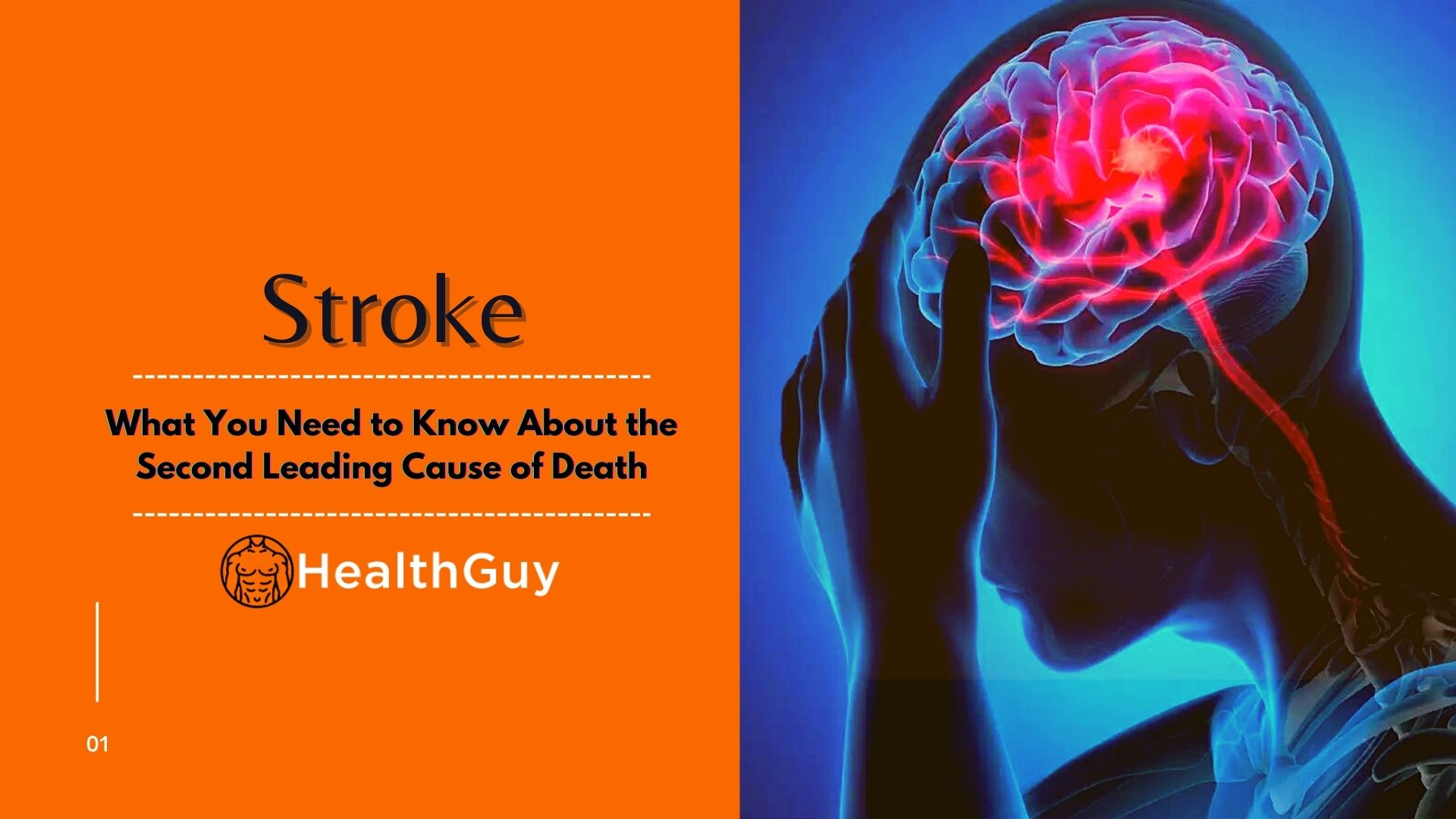
Stroke: What You Need to Know About the Second Leading Cause of Death
A stroke occurs when there is a disruption of blood flow to the brain, either due to a blocked blood vessel or bleeding within the brain. This interruption of blood flow can cause brain cells to die, leading to a variety of symptoms.
There are two main types of stroke: ischemic and hemorrhagic. Ischemic strokes are caused by a blockage in a blood vessel that supplies blood to the brain, while hemorrhagic strokes are caused by bleeding within the brain.
Symptoms of stroke can vary, but common signs include sudden weakness or numbness in the face, arm, or leg, especially on one side of the body, sudden confusion or difficulty speaking or understanding speech, sudden trouble seeing in one or both eyes, sudden dizziness or loss of balance, and sudden severe headache with no known cause.
If you or someone you know experiences these symptoms, it is important to seek medical attention immediately. Time is critical in treating stroke, as the sooner treatment is initiated, the better the chances for recovery.
TrStroke treatment depends on the type of stroke and the severity of symptoms ms. Ischemic stroke is typically treated with medications such as thrombolytics, which dissolve blood clots, and antiplatelet drugs, which prevent blood clots from forming. Hemorrhagic stroke may require surgery to stop the bleeding and relieve pressure on the brain.
Prevention of stroke is important and can be achieved by managing risk factors such as high blood pressure, smoking, and high cholesterol. Eating a healthy diet, exercising regularly, and controlling diabetes can also help reduce the risk of stroke.
Here are some statistics about stroke:
- Stroke is the second leading cause of death globally, accounting for 11% of all deaths in 2019.
- Each year, an estimated 15 million people worldwide suffer a stroke.
- Stroke is a leading cause of disability, with many survivors experiencing long-term physical, cognitive, or emotional impairments.
- In the United States, someone has a stroke every 40 seconds, and someone dies from a stroke every 4 minutes.
- About 87% of all strokes are ischemic strokes, which occur when blood flow to the brain is blocked by a blood clot or plaque buildup in an artery.
- The risk of stroke increases with age, with the risk more than doubling every decade after the age of 55.
- Certain risk factors, including high blood pressure, smoking, diabetes, and high cholesterol, can increase the risk of stroke.
- There are effective treatments for stroke, but time is critical in receiving these treatments. The American Stroke Association recommends that patients with stroke symptoms seek medical attention immediately and receive treatment within 3 hours of symptom onset.
- Stroke can be prevented through lifestyle changes such as maintaining a healthy diet, exercising regularly, and managing risk factors such as high blood pressure, smoking, and diabetes.
- Stroke affects both men and women, but there are some gender-specific differences in stroke risk and outcomes. For example, women are more likely than men to have a stroke at an older age, and women are more likely to experience long-term disability and cognitive impairment after a stroke.
These statistics highlight the importance of stroke prevention, early recognition of stroke symptoms, and prompt treatment to minimize the risk of disability and death.
In conclusion, stroke is a serious and potentially life-threatening condition that requires immediate medical attention. Knowing the signs and symptoms of stroke and taking steps to reduce risk factors can help prevent stroke and improve outcomes for those who experience it. If you suspect someone is having a stroke, call for emergency medical assistance right away.
Stroke and paralysis: Same or different
Stroke and paralysis are different but related conditions. A stroke occurs when there is a disruption of blood flow to the brain, which can cause brain cells to die and result in a variety of symptoms, including paralysis. Paralysis, on the other hand, is a loss of muscle function in part of the body, which can be caused by a stroke or other conditions such as spinal cord injuries or neurological diseases.
In stroke, paralysis can occur on one side of the body, depending on which part of the brain is affected. This is known as hemiplegia, and it can affect the face, arm, and leg on one side of the body. Paralysis can also affect other parts of the body, such as the legs or face, depending on the location and severity of the stroke.
The severity of paralysis can vary widely, from mild weakness or loss of coordination to complete loss of muscle function in the affected area. Paralysis can be temporary or permanent, depending on the cause and treatment.
Treatment for stroke-related paralysis typically involves rehabilitation to help the affected person regain as much function as possible. This may include physical therapy, occupational therapy, and speech therapy. In some cases, assistive devices such as braces or wheelchairs may be necessary to help with mobility.
In summary, while stroke and paralysis are different conditions, they can be related. Stroke can cause paralysis, and paralysis can be a result of a variety of conditions, including stroke. Treatment for paralysis resulting from stroke typically involves rehabilitation to help the affected person regain function to the extent possible.
